
This elegant lemon chicken orzo pasta combines golden-seared chicken cutlets with a silky garlic-lemon orzo, finished with Parmesan for a creamy, restaurant-worthy meal.
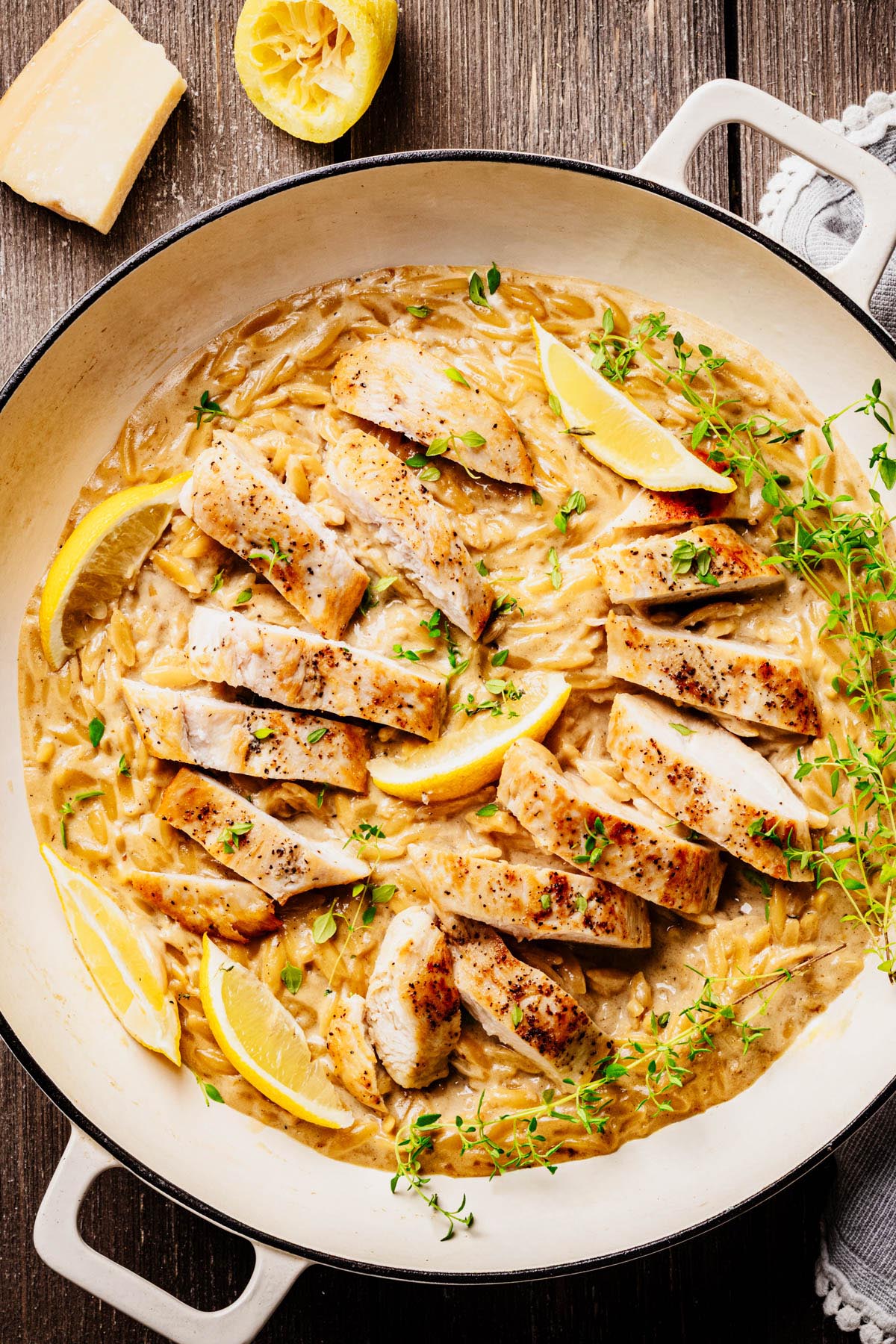
Need a new pasta recipe that feels a little special but doesn’t take all night? This lemon chicken orzo pasta is exactly that. Seared chicken breasts rest on a bed of creamy, garlicky orzo infused with fresh lemon and Parmesan, creating a dish that’s equal parts cozy and flavorful. The orzo cooks right in the same pan, soaking up all those flavorful juices from the chicken, which means less cleanup and more flavor.
It’s simple enough for a weeknight but feels a little more exciting than your usual dinner rotation. My husband and I love meals like this—comforting, flavorful, and just a little bit different.
If you enjoy pasta dinners that are easy but feel a little elevated, you’ll love my pesto chicken pasta, Parmesan butter pasta, or Caprese chicken skillet. They’re all weeknight-friendly and packed with fresh flavor.
Why This Pasta Has Become a Weeknight Favorite
Ingredients You’ll Need to Make It
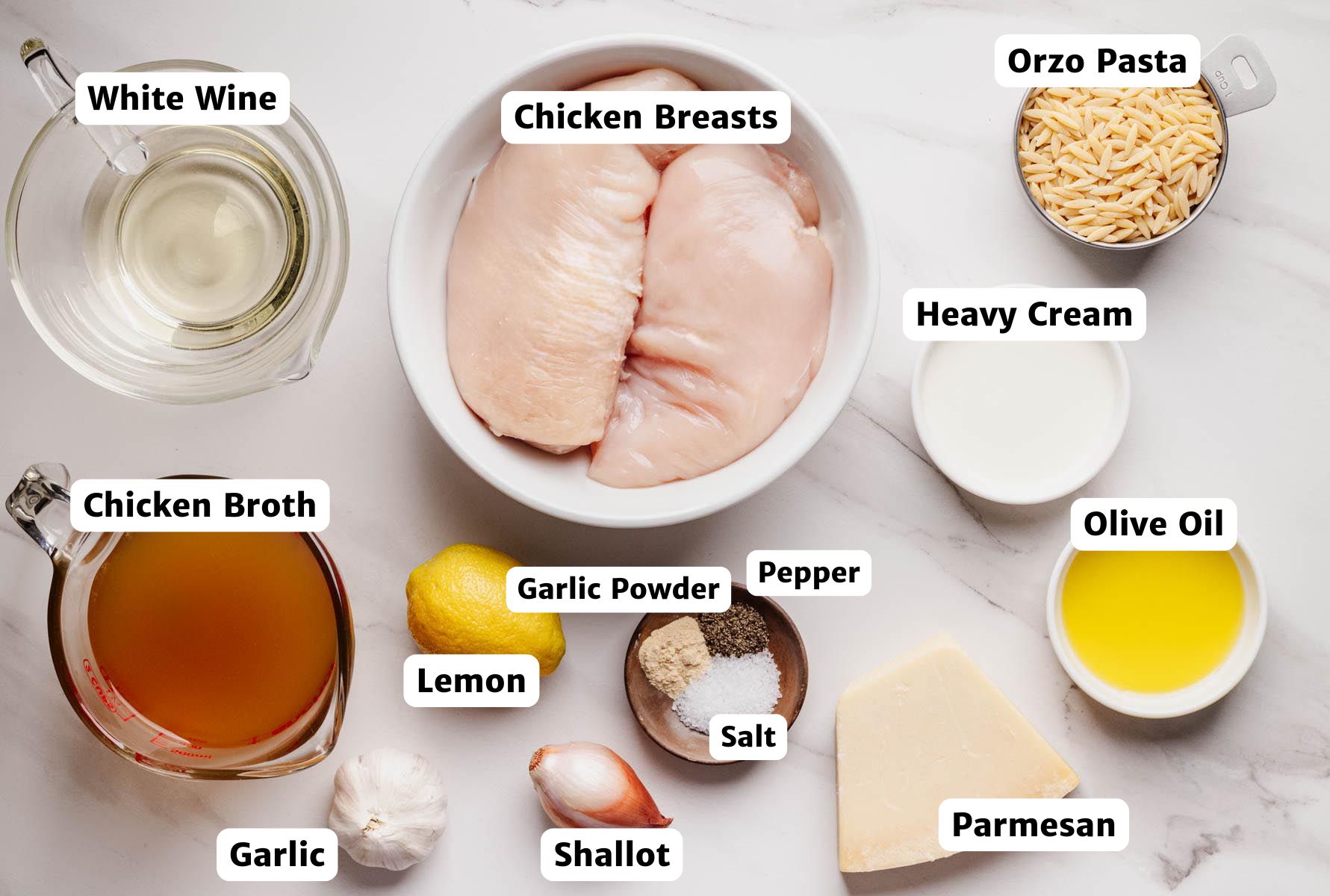
Here’s a quick overview of what you’ll need to make this recipe. Most of these are pantry staples, with a few fresh ingredients to brighten things up. I’ve also included simple substitutions where possible to help you customize the dish.
For the Chicken:
- Boneless, Skinless Chicken Breasts. Slice them into thin cutlets so they cook quickly and evenly.
Substitute: Chicken tenders or thin-sliced boneless chicken thighs will also work. - Kosher Salt, Garlic Powder, and Black Pepper. These simple seasonings help flavor the chicken from the inside out.
- Olive Oil. Used for searing the chicken. Olive oil works well here because it can handle moderate heat and adds mild, complementary flavor.
Substitute: Avocado oil, grapeseed oil, or any neutral cooking oil if you prefer a milder flavor.
For the Orzo:
- Olive Oil. A little more for building flavor in the orzo.
Substitute: Butter or neutral oil, depending on your preference. - Shallot. Adds a delicate, savory sweetness.
Substitute: Finely diced yellow onion. - Garlic Cloves. Fresh garlic brings depth to the orzo.
Substitute: ¼ to ½ teaspoon garlic powder, if fresh isn’t available. - Orzo Pasta. This small, rice-shaped pasta cooks up tender directly in the pan.
Substitute: Small pasta like ditalini or pastina could work, but orzo is best for the creamy texture. - Dry White Wine. Adds acidity and depth to the sauce. It also helps deglaze the pan, loosening all those flavorful browned bits (called fond) left behind from searing the chicken. Don’t let that flavor go to waste!
Substitute: Chicken broth plus 1 teaspoon white wine vinegar or lemon juice. - Low-Sodium Chicken Broth. Forms the flavorful base for cooking the orzo.
Substitute: Vegetable broth or homemade stock. - Lemon Zest and Fresh Lemon Juice. These brighten and balance the creamy sauce.
Substitute: Bottled lemon juice in a pinch, though fresh gives the best flavor. - Parmesan Cheese. Freshly grated for the creamiest texture.
Substitute: Grated Pecorino Romano or Asiago, though Parmesan keeps the flavors more balanced. - Half-and-Half or Heavy Cream. Adds silkiness to the orzo without making it overly heavy.
Substitute: Whole milk for a lighter version or omit for a broth-only version with less creaminess. - Butter (optional). Adds extra richness if you’d like a creamier finish.
Substitute: Omit or replace with a drizzle of olive oil for a lighter option. - Fresh Parsley or Thyme. A final touch of color and freshness.
Substitute: Chopped fresh basil, chives, or omit entirely.
See How It’s Made
Follow along with these step-by-step photos to see exactly how this lemon chicken orzo pasta comes together.
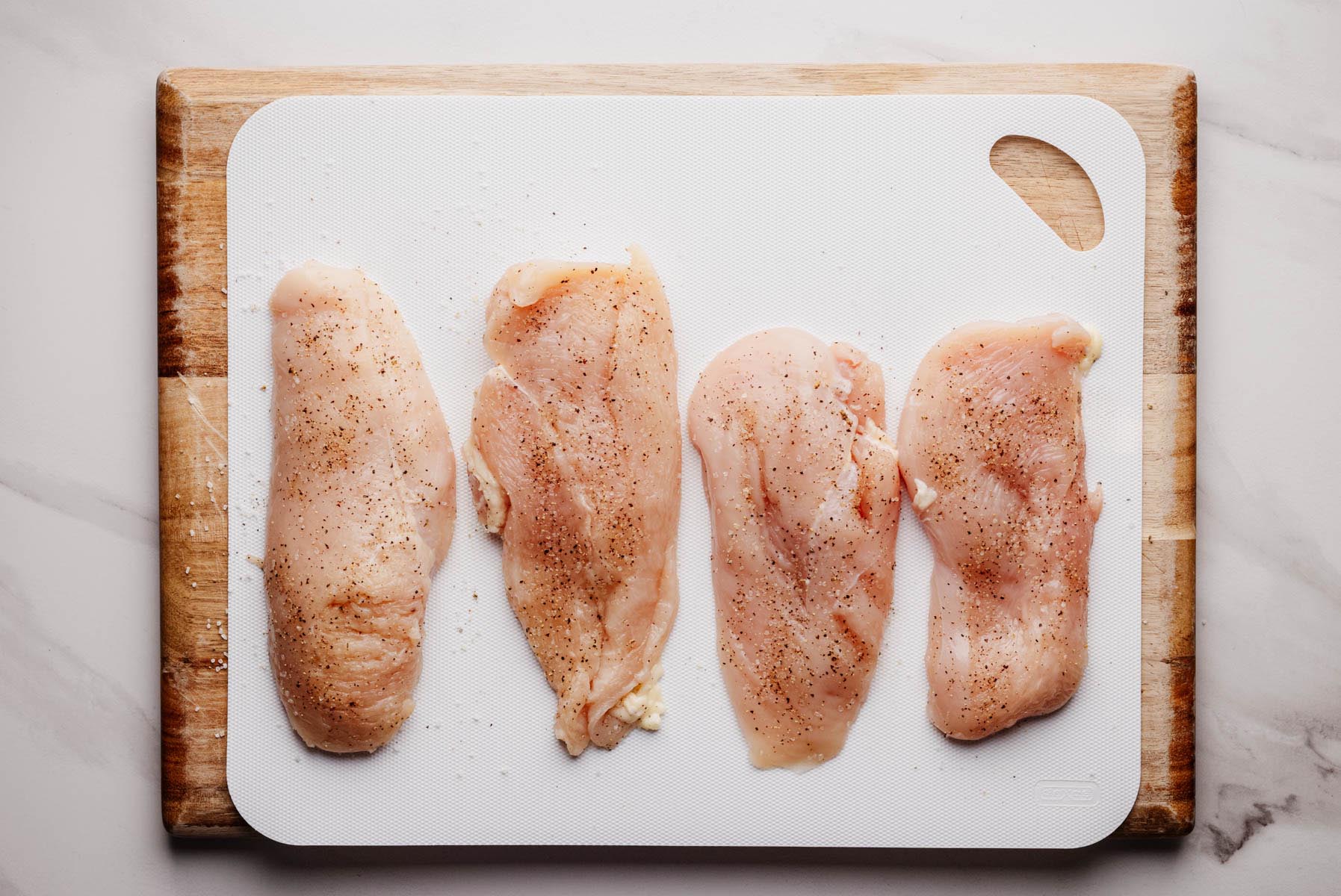
Short on time? Skip the brine and season just before cooking.
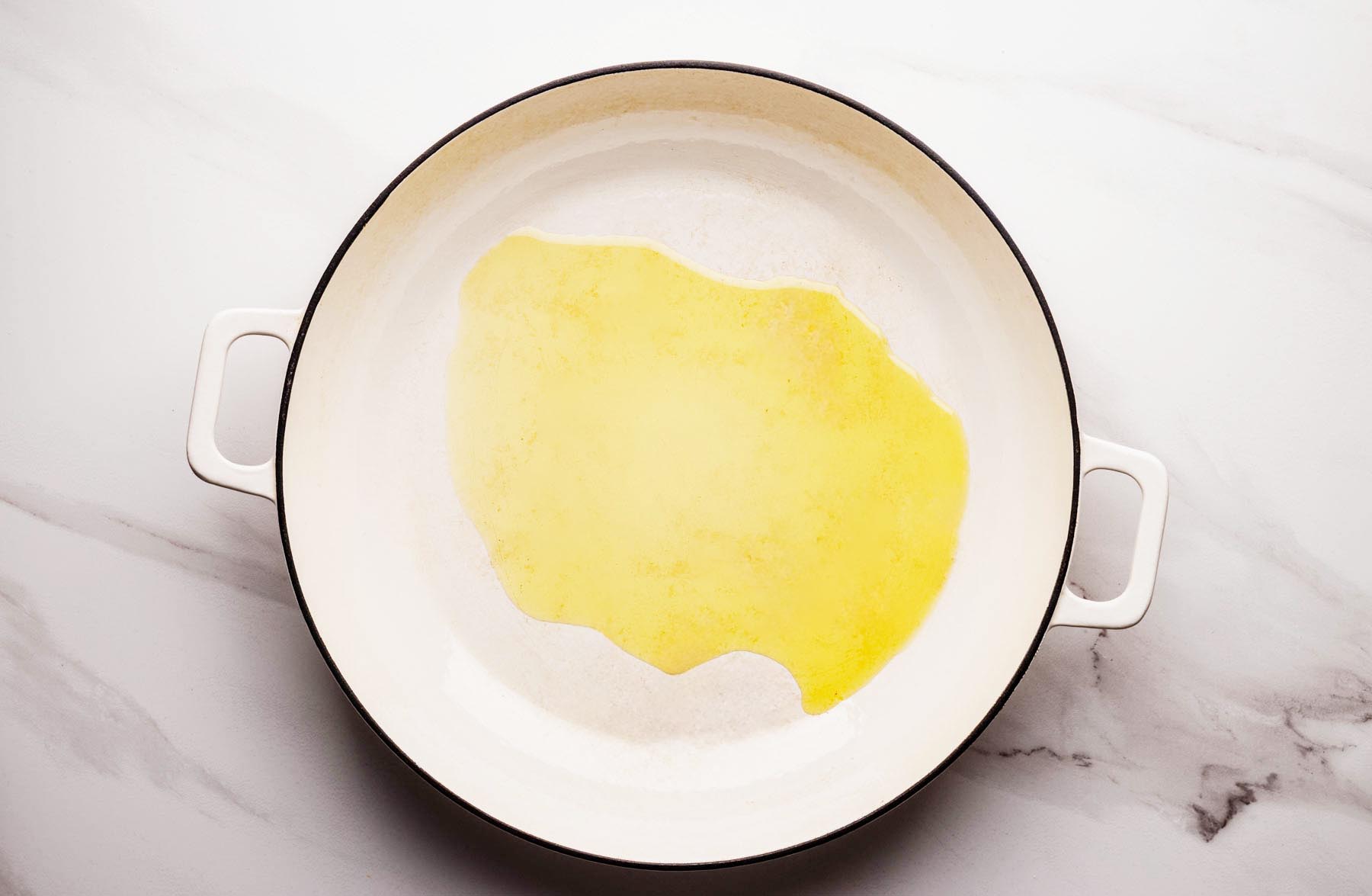
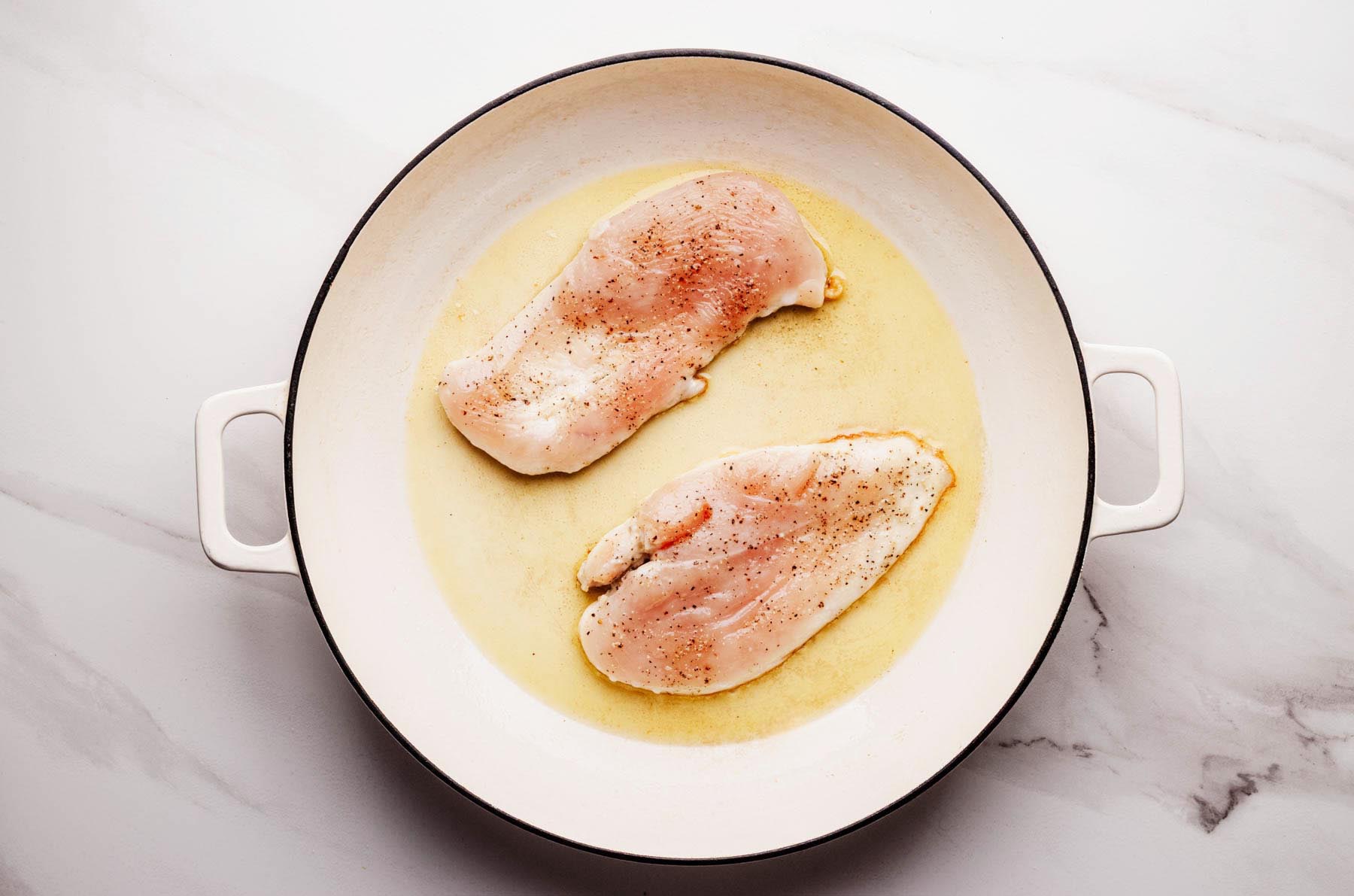
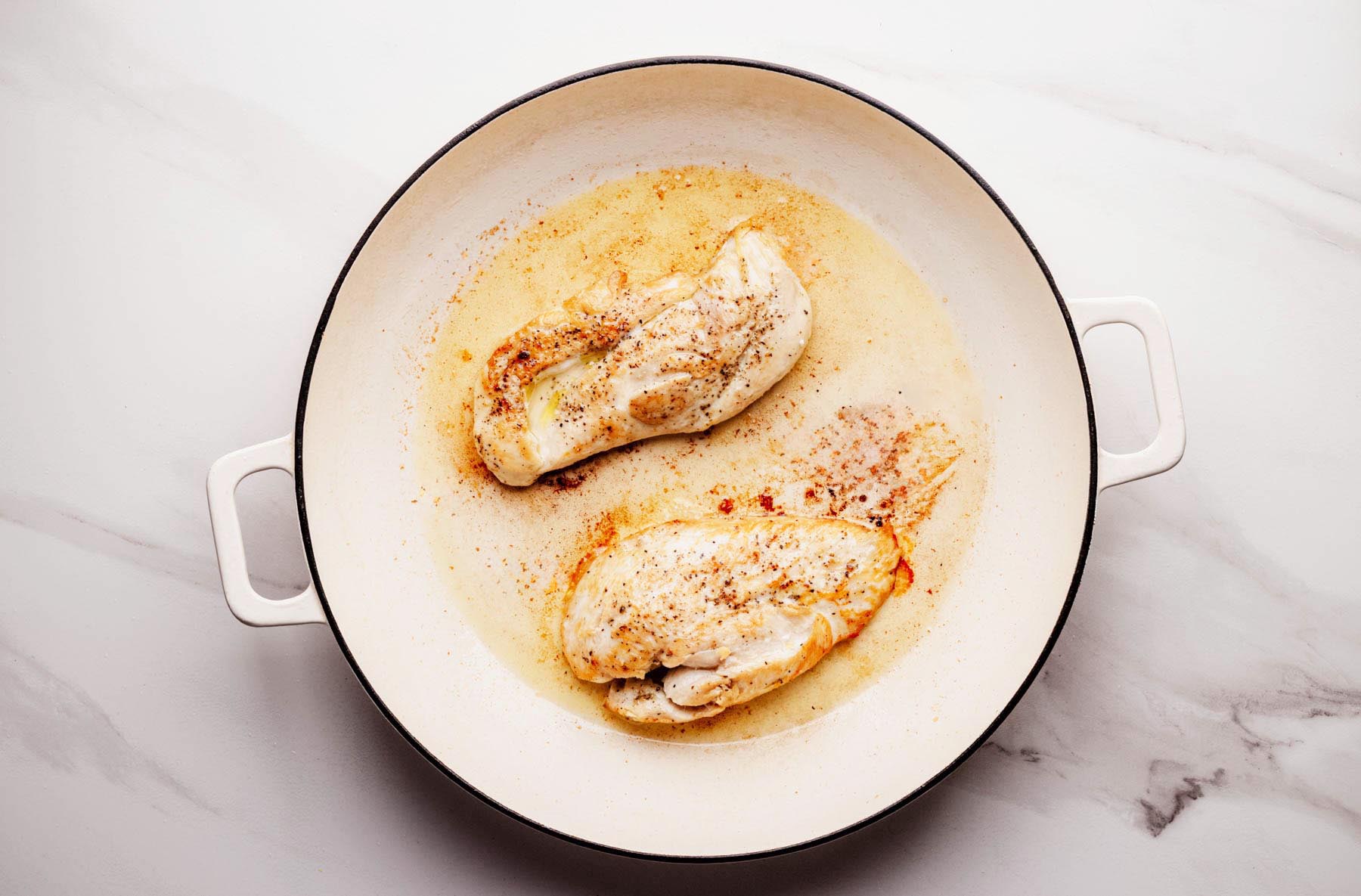
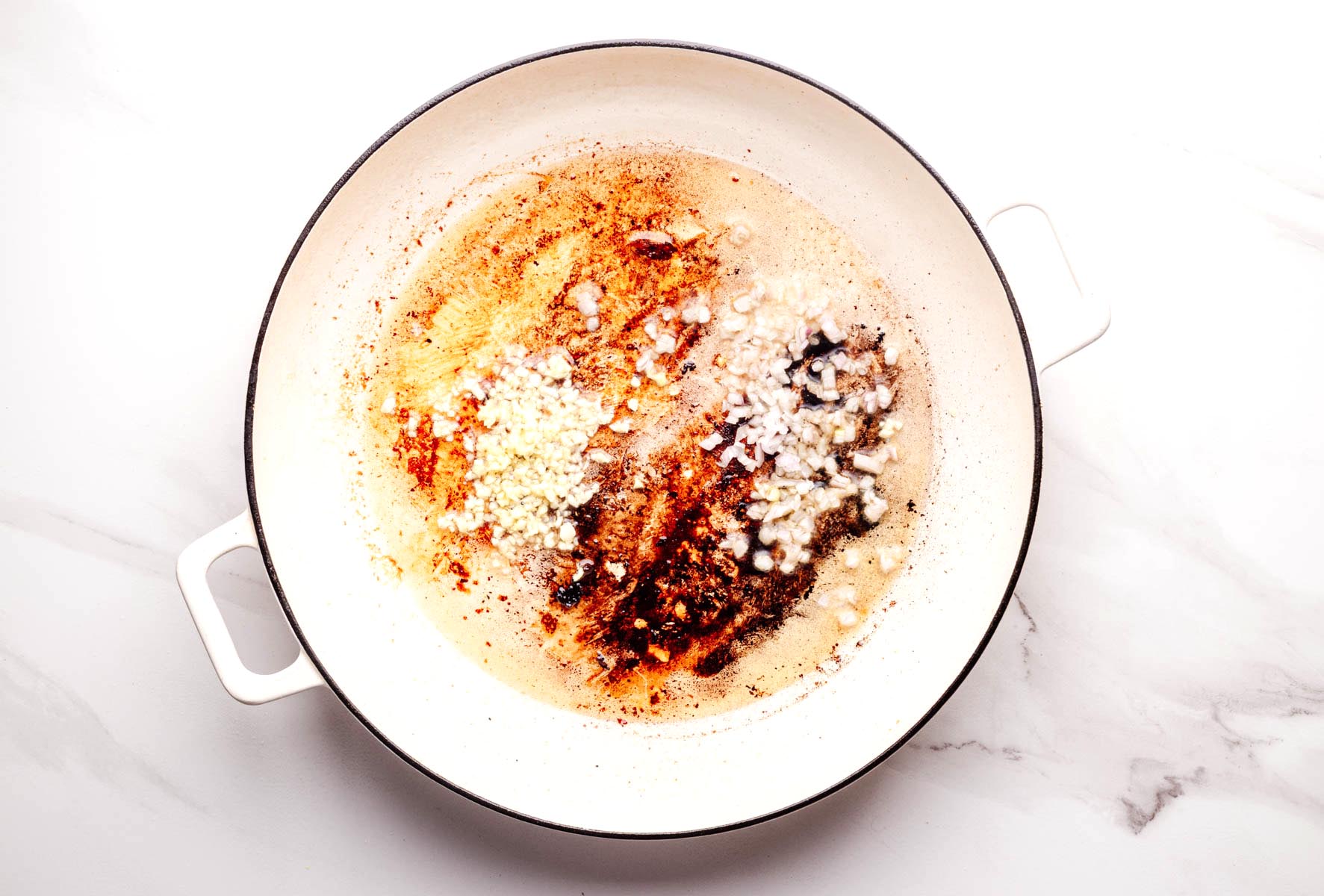
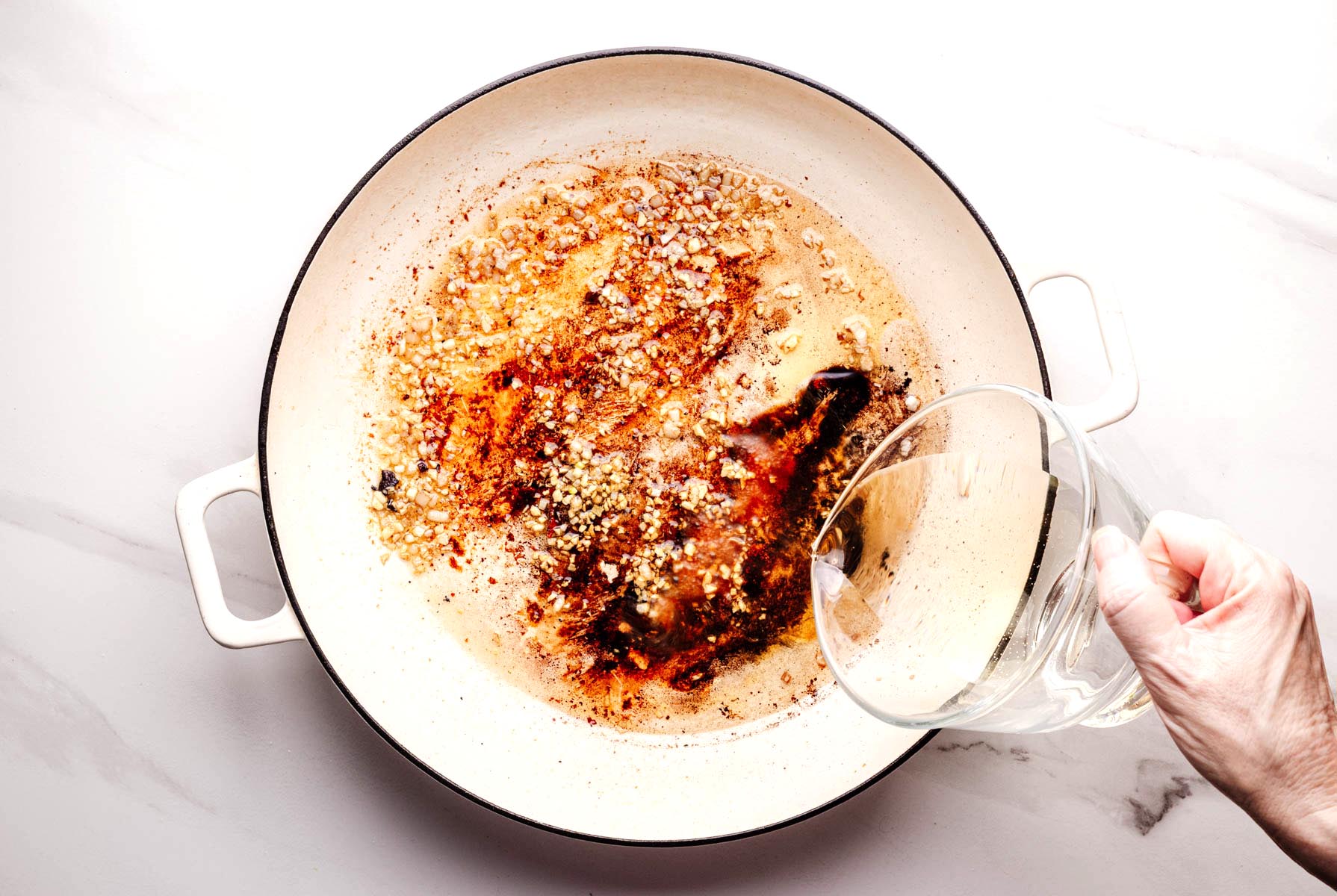
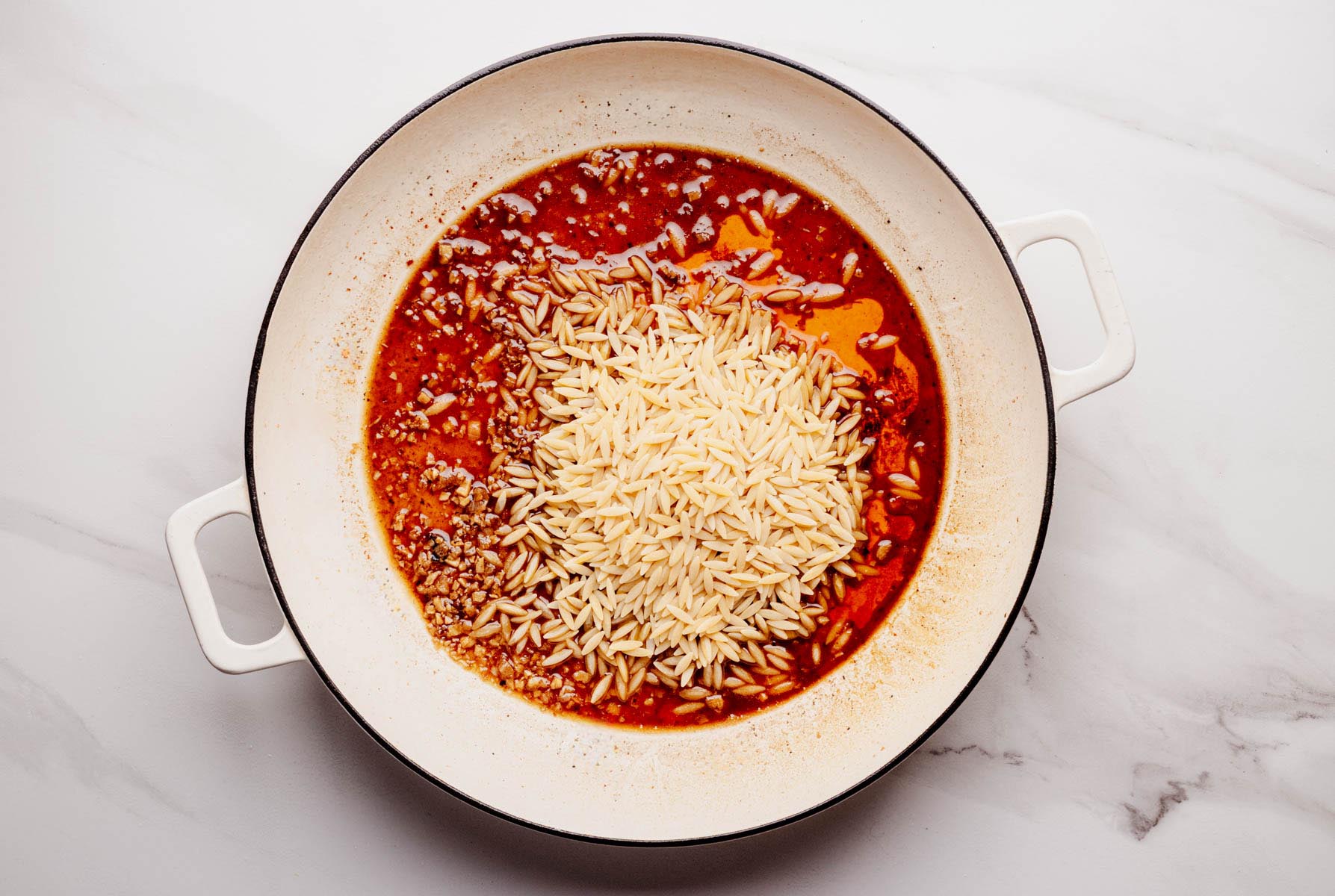
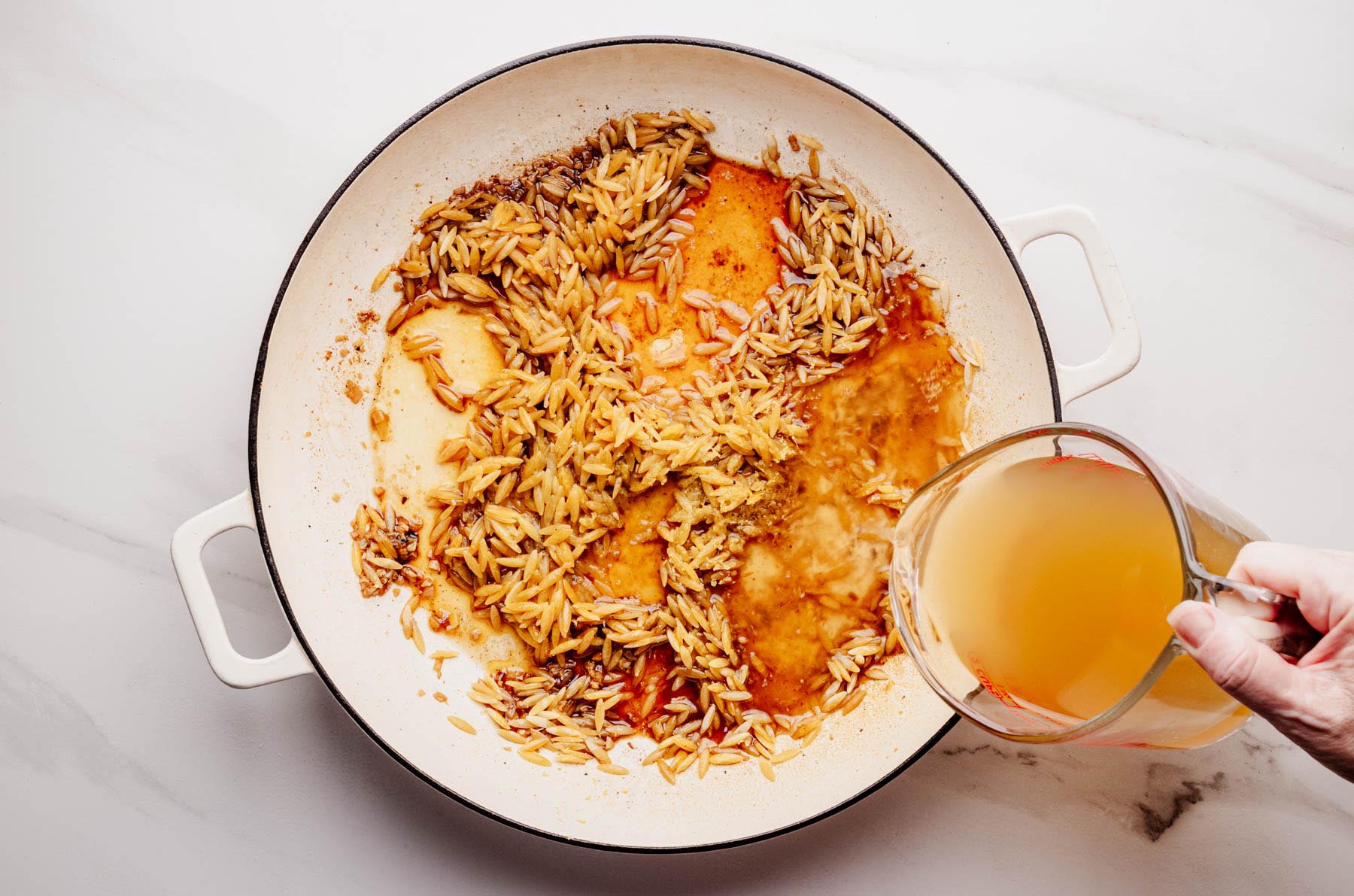
Step 8: Cover and simmer 8–10 minutes, stirring often. Add extra broth as needed if orzo dries out before fully cooked.
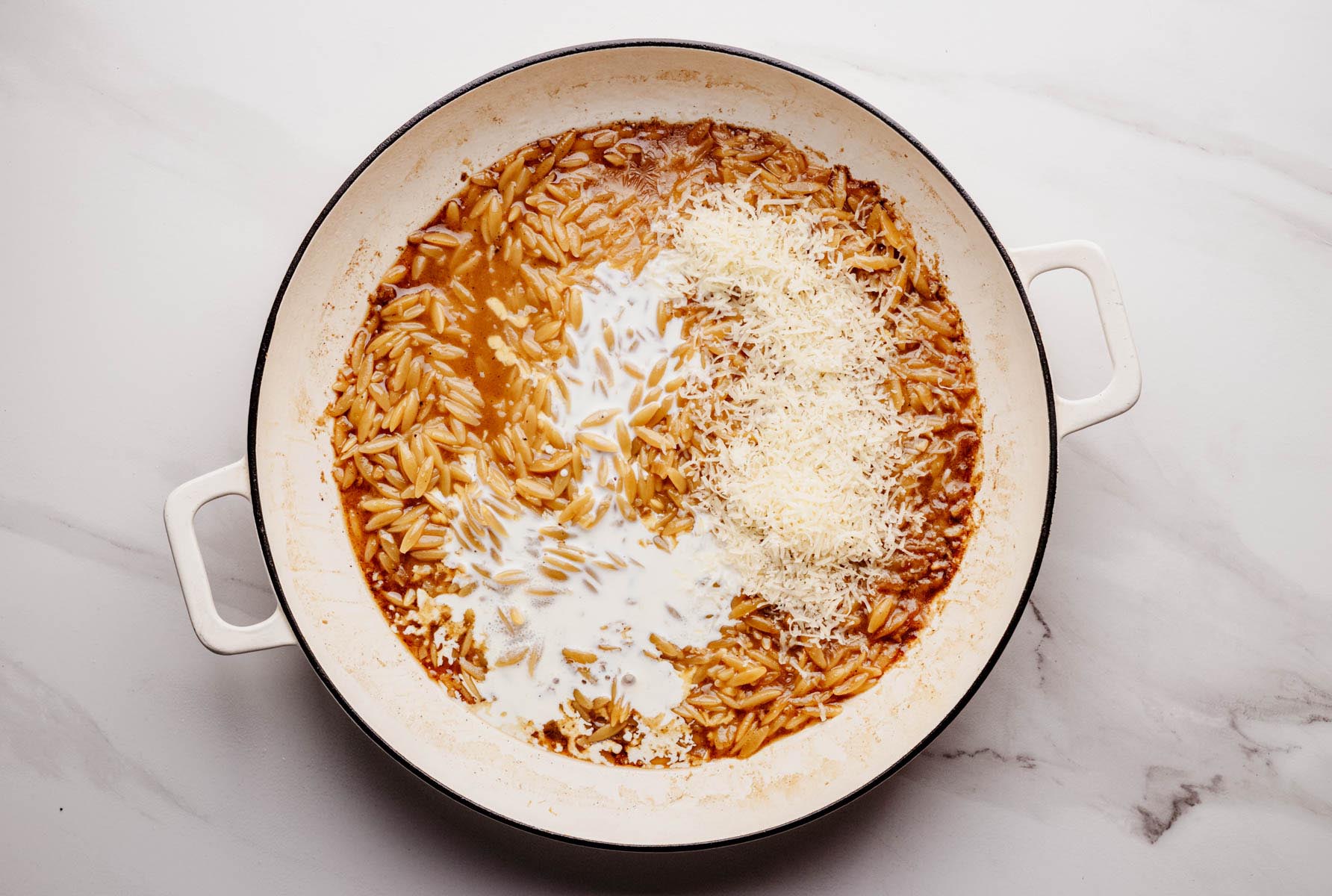
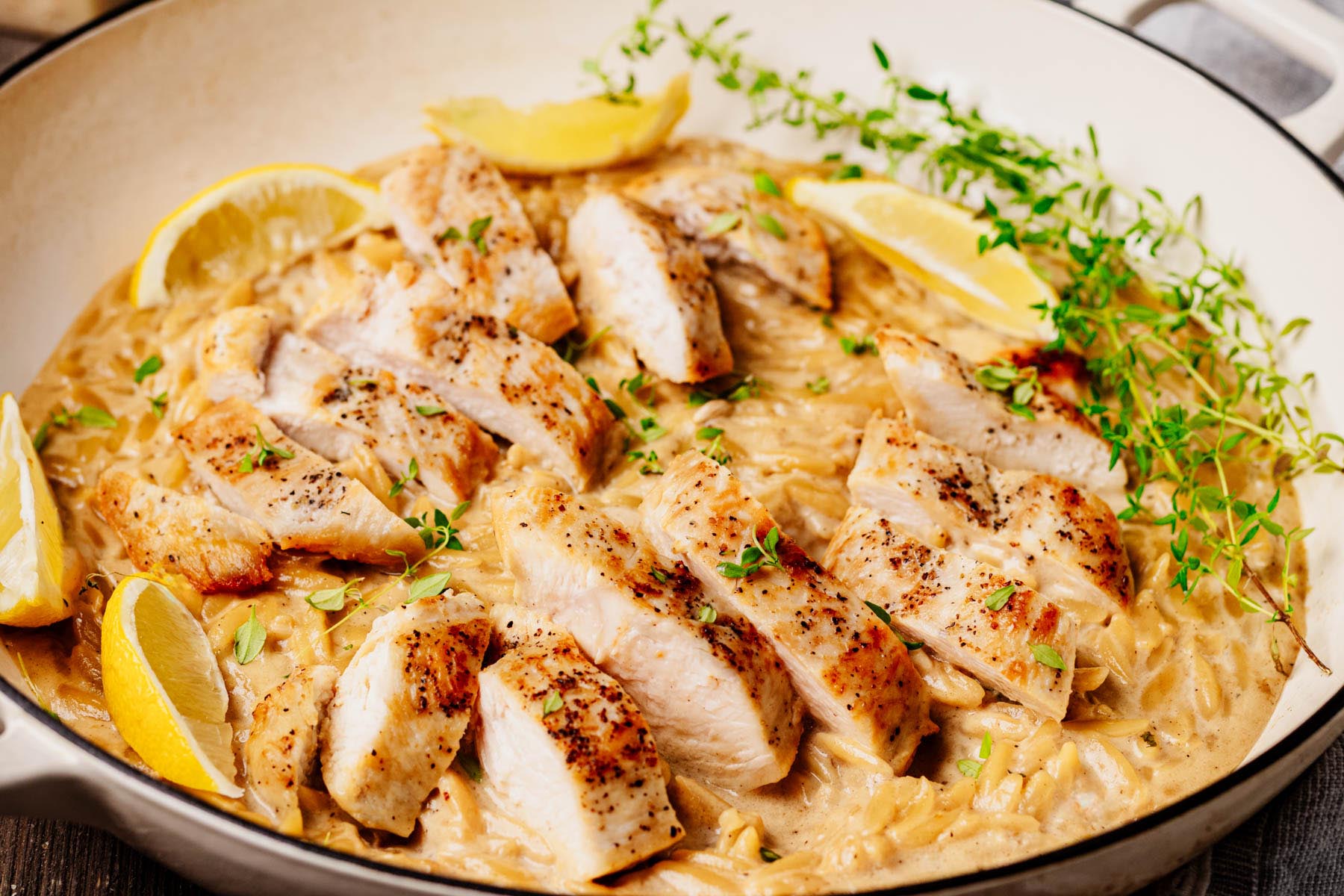
How to Nail This Recipe Every Time
- Don’t skip stirring the orzo. Stir every couple of minutes as it simmers to prevent sticking or clumping.
- Keep extra broth nearby. If the orzo thickens too quickly, just add a splash to loosen it up.
- Sear the chicken but don’t overcook. Remove from heat around 160 F (70 C). The residual heat will finish the job without drying it out.
- Taste and adjust the lemon at the end. A final squeeze of fresh lemon brightens the whole dish, but you can add as much or as little as you like.
- Use freshly grated Parmesan. It melts more smoothly and creates a creamier sauce.
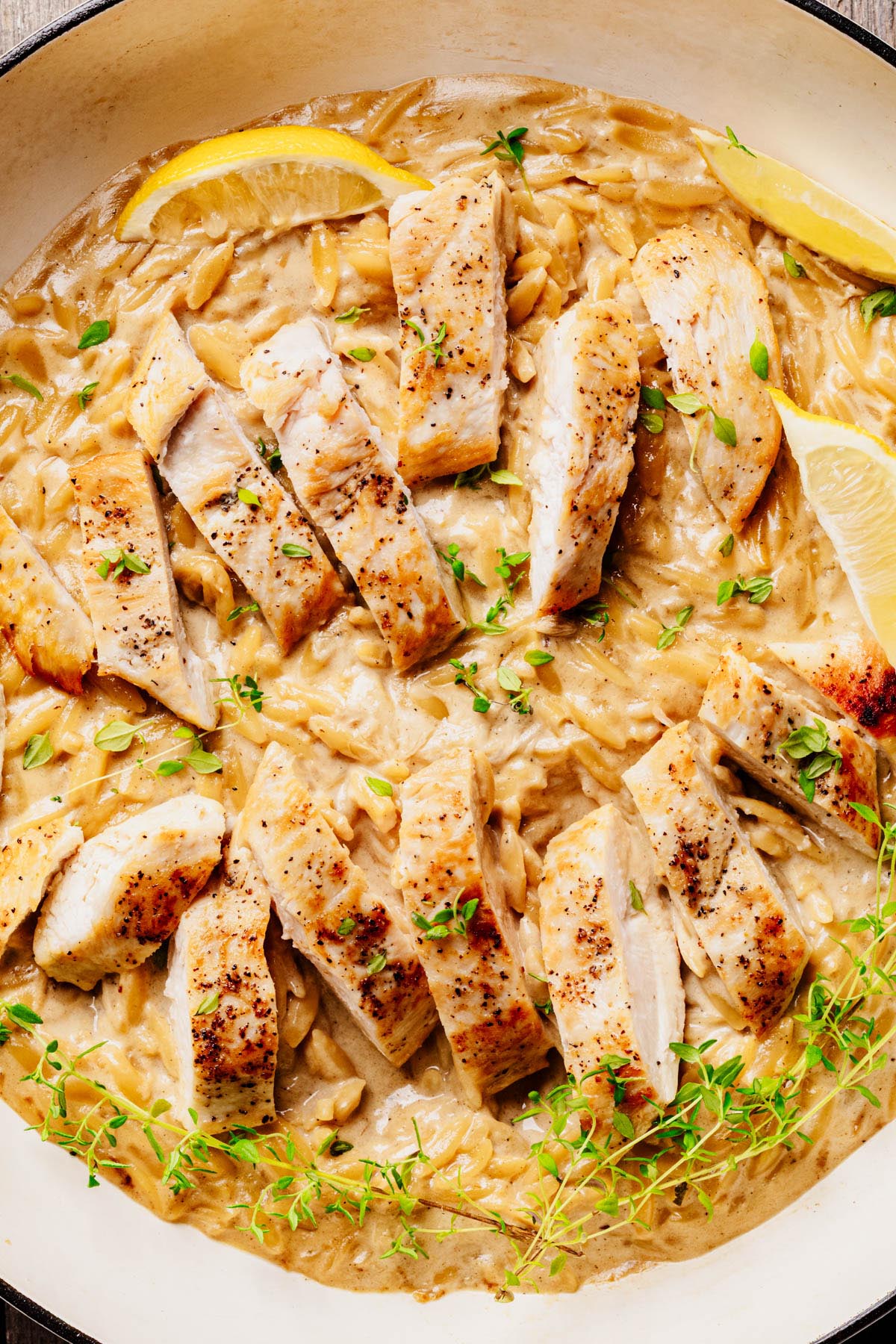
Storage and Reheating
Leftovers? Lucky you! This lemon chicken orzo stores well and makes a great next-day lunch.
- Storage. Transfer leftovers to an airtight container and refrigerate for up to 3 days. The orzo will thicken as it sits, but the flavor stays bright and delicious.
- Reheating. Reheat gently in a saucepan over medium-low heat or in the microwave. Add a splash of broth, water, or milk to loosen the sauce as the orzo will absorb moisture during storage. Stir until creamy again.
- Tip. For the best texture, store the chicken and orzo separately if possible, then slice and reheat the chicken on its own before serving over the warmed orzo.
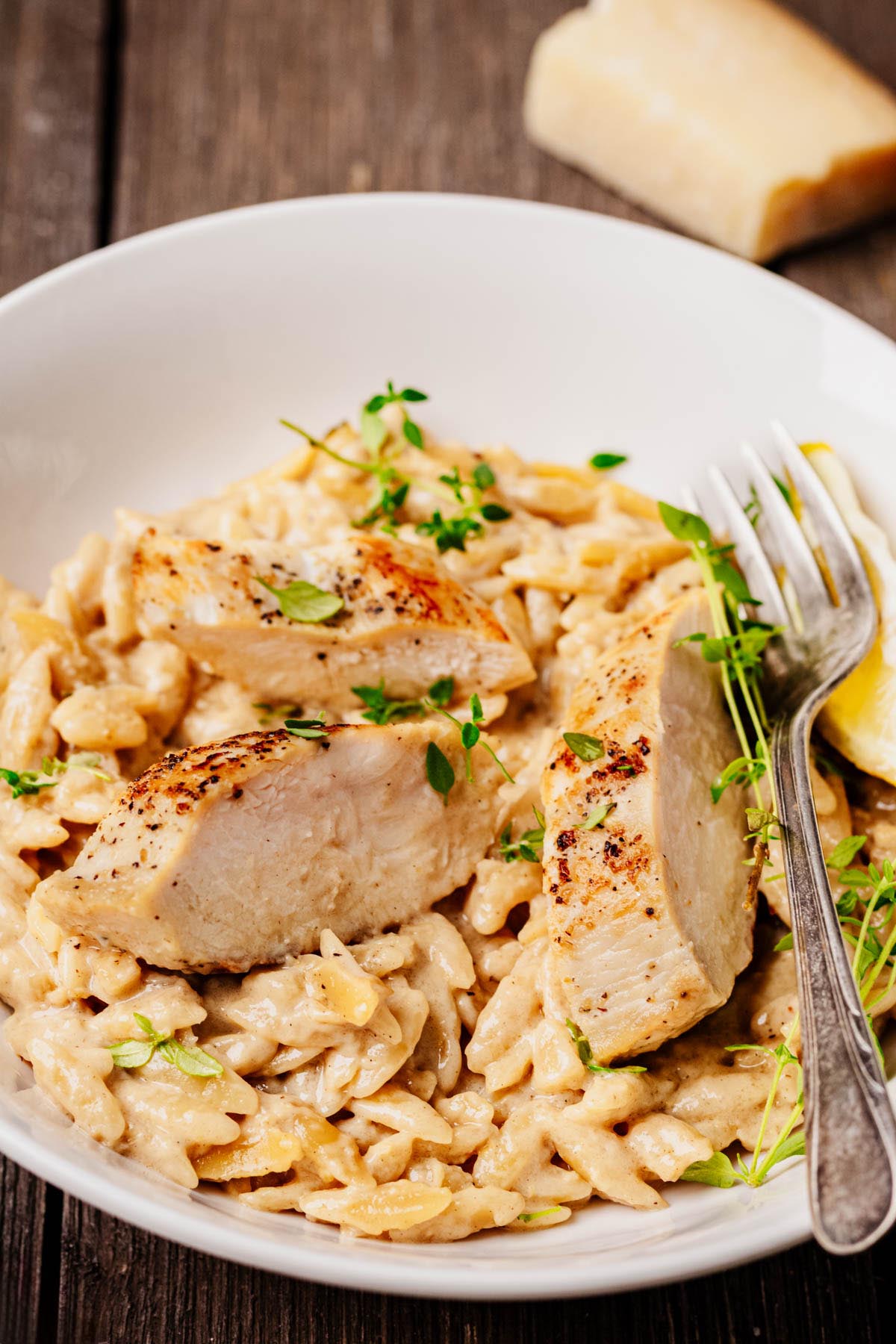
For the Chicken:
- 2 boneless, skinless chicken breasts (about 1½ lbs total), sliced into cutlets
- 1 teaspoon kosher salt You can substitute coarse sea salt.
- ½ teaspoon garlic powder
- ½ teaspoon black pepper
- 1 tablespoon olive oil
For the Orzo:
- 1 tablespoon olive oil
- 1 tablespoon finely chopped shallot about 1/4 of a medium shallot
- 2 garlic cloves minced
- ½ cup dry white wine or substitute broth + 1 tsp white wine vinegar (Note 1)
- 1 cup orzo pasta (Note 2)
- 1¾ cups low-sodium chicken broth plus extra as needed (Note 3)
- 1 teaspoon lemon zest (Note 4)
- 2 tablespoon fresh lemon juice from about 1 medium lemon
- ½ cup freshly grated Parmesan cheese (Note 5)
- 2 tablespoon half-and-half or heavy cream (Note 6)
- 1 tablespoon unsalted butter optional; (Note 7)
- 2 tablespoon chopped fresh parsley or thyme
-
Slice each 2 boneless, skinless chicken breasts horizontally to create 4 thin cutlets. (Note 8)Dry brine: Season both sides of each cutlet evenly with 1 teaspoon kosher salt, ½ teaspoon garlic powder, and ½ teaspoon black pepper.Place chicken on a plate or rack and refrigerate uncovered for at least 1 hour (up to 4 hours for best results). (Note 9)Let sit at room temperature for 15–20 minutes before cooking.Short on time? Skip the dry brine and season just before cooking. The chicken will still taste great—just a bit less juicy and flavorful. (Note 10)
-
Heat 1 tablespoon olive oil in a large skillet over medium heat.
-
Sear chicken cutlets for 2–3 minutes per side, until cooked through. To prevent overcooking, remove from heat at about 160 F (70 C). Residual heat will bring it to a safe internal temperature of 165 F (74 C).No thermometer? Cut into one cutlet. The juices should run clear and the center should be opaque white.Transfer cooked chicken to a plate and tent loosely with foil.
-
In the same pan, reduce heat to medium-low. Add 1 tablespoon olive oil, 1 tablespoon finely chopped shallot, and 2 garlic cloves (minced). Sauté for 1–2 minutes until softened.
-
Deglaze with ½ cup dry white wine, scraping up browned bits. Simmer for 1–2 minutes to reduce slightly.
-
Stir in 1 cup orzo pasta for 1 minute to coat the grains and boost flavor. (Note 11)
-
Add 1¾ cups low-sodium chicken broth, 1 teaspoon lemon zest, and 2 tablespoon fresh lemon juice. Stir well.
-
Cover and simmer for 8–10 minutes, stirring every couple of minutes to prevent clumping.Check consistency: If orzo absorbs all liquid before fully cooked, add extra broth a splash at a time. (Note 12)
-
Once orzo is al dente and most liquid is absorbed, stir in ½ cup freshly grated Parmesan cheese, 2 tablespoon half-and-half or heavy cream, and1 tablespoon unsalted butter (if using). Stir until creamy.
-
Slice or halve the chicken, return to the pan, and let rest off heat for 2–3 minutes.Finish with 2 tablespoon chopped fresh parsley or thyme and an extra squeeze of lemon juice if desired. (Note 13)
- Dry white wine adds depth of flavor. Avoid sweet wines. Substitute broth plus vinegar for a non-alcoholic option.
- Orzo is a rice-shaped pasta. Look for it near other dried pasta.
- Keep extra broth nearby in case the orzo thickens too quickly. Different brands absorb liquid differently.
- Zest your lemon before juicing for ease.
- Use freshly grated Parmesan for the best melt and flavor.
- Half-and-half provides light creaminess; use heavy cream for a richer result.
- The butter is optional. It adds extra richness and flavor but isn’t needed for creaminess.
- Thin cutlets cook faster and more evenly.
- 1 to 4 hours of dry brining is ideal. Longer than 4 hours won’t improve results significantly.
- Skipping the brine? Season immediately before cooking.
- Orzo should look creamy, not dry or sticky. Add broth as needed to adjust.
- Adjust lemon to taste at the end for a bright, fresh finish.
Calories: 398kcal | Carbohydrates: 33g | Protein: 24g | Fat: 17g | Saturated Fat: 6g | Polyunsaturated Fat: 2g | Monounsaturated Fat: 8g | Trans Fat: 0.1g | Cholesterol: 55mg | Sodium: 888mg | Potassium: 456mg | Fiber: 1g | Sugar: 2g | Vitamin A: 231IU | Vitamin C: 5mg | Calcium: 181mg | Iron: 1mg
Servings: 4 servings
Calories: 398kcal







